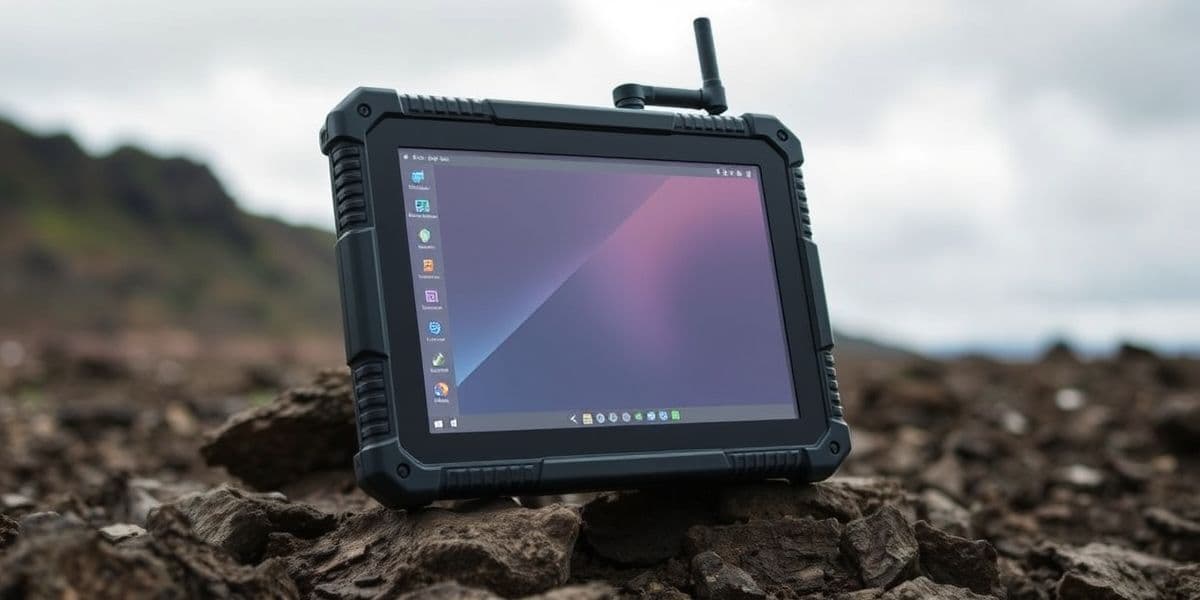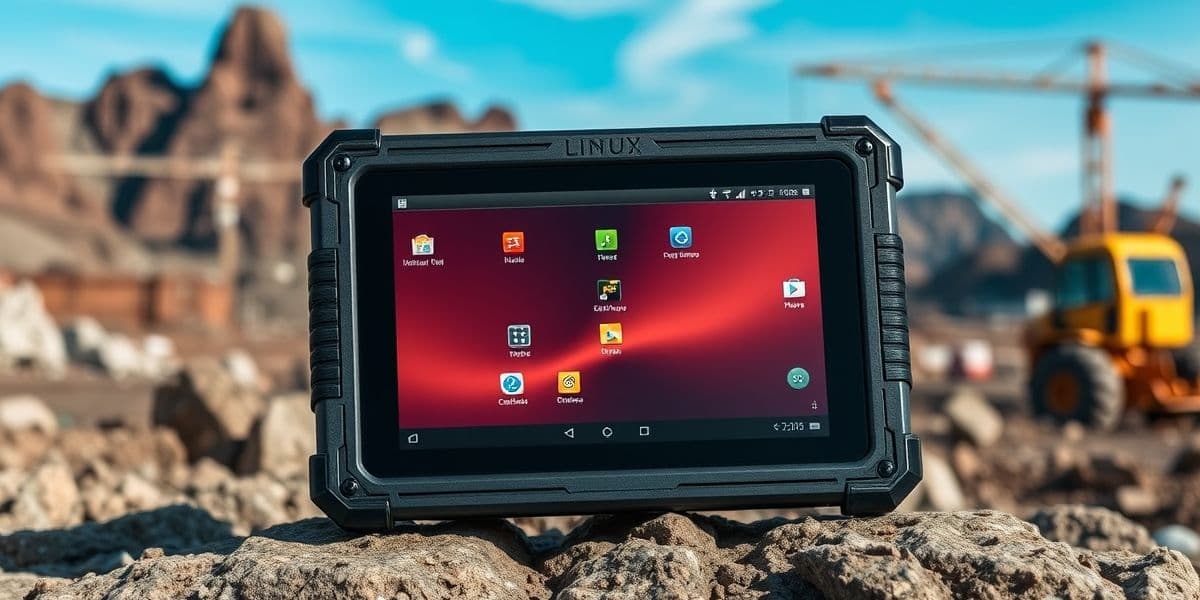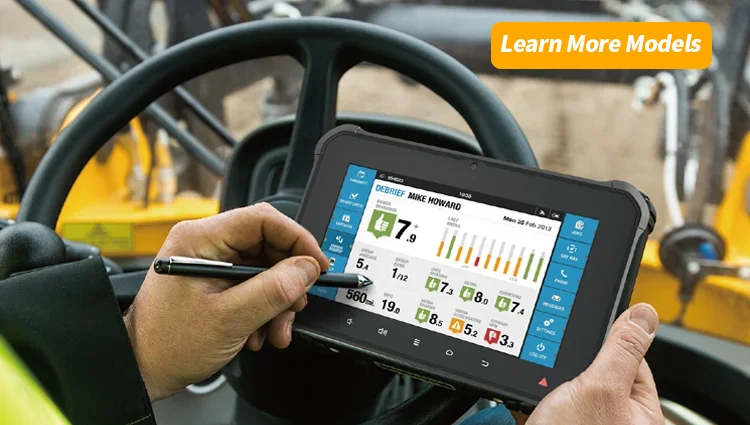Home > Blog > How to Choose a Rugged Linux Tablet for RTK
How to Choose a Rugged Linux Tablet for RTK
Time: 2025-02-10 Editor: Hitekon Rugged Vehicle Tablet Rugged Vehicle Tablet Manufacturer
In today’s demanding industrial environments, the need for reliable and durable computing devices has never been more critical. For professionals working with Real-Time Kinematic (RTK) technology, selecting the right rugged Linux tablet can significantly enhance productivity and accuracy. This comprehensive guide will walk you through the essential factors to consider when choosing a rugged Linux tablet for RTK applications, ensuring you make an informed decision.

Understanding RTK and Its Requirements
RTK technology is widely used in industries such as surveying, construction, agriculture, and logistics to achieve centimeter-level positioning accuracy. To support RTK applications effectively, a rugged Linux tablet must meet several key requirements:
- High-Precision GNSS Module: The tablet should be equipped with a high-precision Global Navigation Satellite System (GNSS) module capable of supporting multiple satellite constellations (GPS, GLONASS, Galileo, BDS) and providing real-time positioning data.
- Robust Connectivity: Reliable connectivity options, including Wi-Fi, Bluetooth, and optional 4G LTE, are crucial for seamless data transmission and communication.
- Durability and Ruggedness: The device must be built to withstand harsh environmental conditions, such as extreme temperatures, water, dust, and physical shocks.
- Extended Battery Life: Long-lasting batteries are essential for uninterrupted operation in the field.
- Customization and Security: Linux offers unparalleled customization and enhanced security features, making it an ideal operating system for sensitive industrial applications.
Key Features to Look for in a Rugged Linux Tablet for RTK
- Processor and Performance
- High-Performance CPU: Look for tablets equipped with powerful processors, such as the Intel Core-i5 or advanced octa-core CPUs, to handle demanding RTK applications.
- RAM and Storage: Adequate RAM (at least 8GB) and storage (128GB or more) are necessary to ensure smooth multitasking and data storage.
- Display and Usability
- High-Resolution Screen: A high-resolution, sunlight-readable display (1000 nits or more) ensures clear visibility in outdoor conditions.
- Touchscreen Durability: The screen should be protected with Gorilla Glass or similar materials to resist scratches and impacts.
- Connectivity Options
- Wi-Fi and Bluetooth: Dual-band Wi-Fi (802.11 a/b/g/n/ac) and Bluetooth 5.0 or higher are essential for reliable wireless communication.
- 4G LTE: Optional 4G LTE connectivity can be a game changer for real-time data transmission in remote areas.
- Ruggedness and Durability
- IP Rating: Ensure the tablet has a high IP rating (IP67 or higher) for water and dust resistance.
- MIL-STD-810G Certification: This military-grade certification guarantees the device can withstand shocks, vibrations, and extreme temperatures.
- Battery Life
- Extended Battery Capacity: Look for tablets with large-capacity batteries (10,000 mAh or more) to support long-duration field operations.
- Fast Charging: Quick charging capabilities (e.g., QC 3.0) can help reduce downtime.
- Operating System and Customization
- Linux Distribution: Choose a tablet running a stable and secure Linux distribution, such as Ubuntu, which offers extensive customization options.
- Pre-installed Software: Some tablets come with pre-installed RTK software, which can simplify setup and integration.

Evaluating Popular Rugged Linux Tablets for RTK
Several rugged Linux tablets on the market are well-suited for RTK applications. Here are a few notable options:
- Conker LX10
- Processor: Intel Core-i5
- Display: 10.1-inch, 1920×1080 resolution, 1000 nits brightness
- Ruggedness: IP67, MIL-STD-810G
- Battery: 10,000mAh
- cptablet Rugged Linux Tablet
- Processor: Advanced octa-core CPU
- Display: High-resolution, sunlight-readable screen
- Ruggedness: IP65, MIL-STD-810G
- Battery: Long-lasting, with optional 4G LTE
- Waysion SYVR10R
- Processor: High-performance octa-core CPU
- Display: 10.1-inch, 1920×1200 resolution
- Ruggedness: IP67, MIL-STD-810G
- Battery: 9,000mAh
FAQ: Common Questions About Rugged Linux Tablets for RTK
- Why are rugged Linux tablets ideal for RTK applications?
- Rugged Linux tablets offer a combination of durability, high-precision GPS capabilities, and robust connectivity options, making them perfect for RTK applications.
- What is the importance of an IP67 rating?
- An IP67 rating indicates that the tablet is dust-tight and can withstand immersion in water up to 1 meter for 30 minutes, ensuring it remains functional in wet and dusty environments.
- How does Linux enhance data security for RTK applications?
- Linux’s open-source nature allows for extensive customization and enhanced security features, such as encryption and secure boot, which are crucial for protecting sensitive RTK data.
- What are the benefits of a tablet with MIL-STD-810G certification?
- MIL-STD-810G certification ensures the tablet can withstand extreme conditions, including shocks, vibrations, and temperature extremes, making it reliable for industrial use.
- How can I extend the battery life of my rugged Linux tablet?
- Optimize power settings, use energy-efficient apps, and consider external battery packs or docking stations for extended field use.
Conclusion
Choosing the right rugged Linux tablet for RTK applications involves careful consideration of several factors, including processor performance, display quality, connectivity options, ruggedness, and battery life. By evaluating these aspects and understanding the specific needs of your RTK workflow, you can select a device that will enhance productivity, accuracy, and reliability in the field. Whether you are working in construction, agriculture, or surveying, a rugged Linux tablet is a valuable investment that can significantly improve your RTK operations.
Previous: Rugged Tablet Industry Applications: Transforming Workflows Across Sectors
Next: Unveiling the Brightest Tablet: A Comprehensive Guide
Copyright © 2025.Hitekon Rugged Vehicle Tablet All rights reserved.
Public Transportation, Taxi Dispatch, Mining, Forklift Safety, Fleet Management, Precision Agriculture





